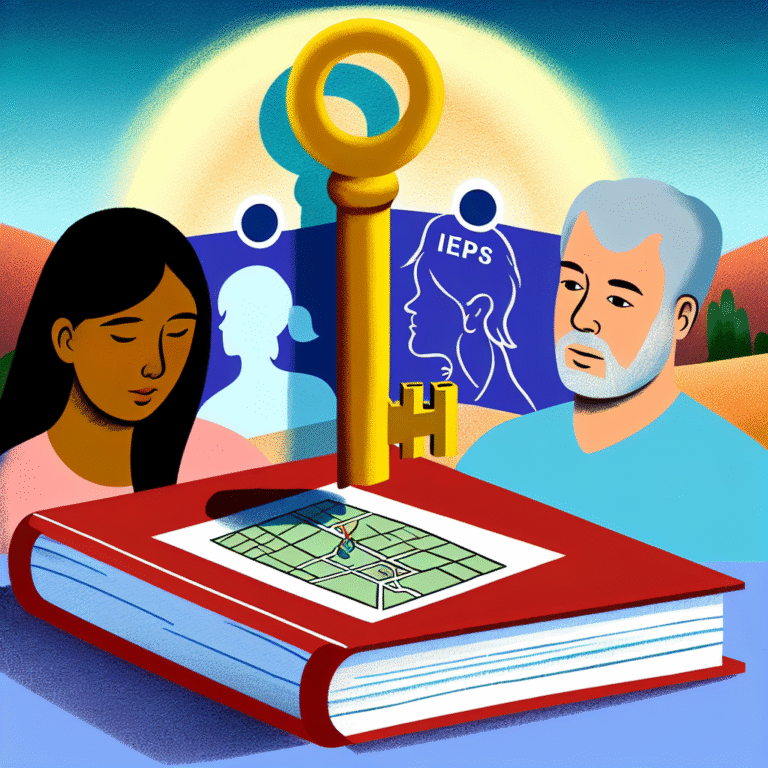
Introduction
In a world often marked by uncertainty, the strength of our communities is frequently put to the test. Whether it be during natural disasters, economic downturns, or public health emergencies, the need for robust community resources has never been more pressing. Understanding Thriving Together: The Importance of Community Resources in Times of Crisis is crucial, as these resources often become the bedrock upon which resilience is built. Communities that harness their collective strength, sharing information, resources, and emotional support, are not only able to survive crises but thrive in spite of them.
The Foundation of Community Resilience
What Are Community Resources?
Community resources comprise a broad range of available tools and support systems that help individuals and groups navigate challenges. They include food banks, mental health services, volunteer organizations, local businesses, and government agencies. During times of crisis, these resources become life lines, providing immediate aid and long-term support.
Table 1: Types of Community Resources
| Type | Description |
|---|---|
| Food Assistance | Food banks, community kitchens |
| Health Services | Clinics, mental health support |
| Educational Resources | Libraries, online learning platforms |
| Housing Assistance | Shelters, low-income housing programs |
| Volunteer Networks | Organizations mobilizing citizen support |
The Importance of Collective Action
Community resilience is not merely a matter of resources; it is a reflection of the relationships between individuals and organizations. The adage "it takes a village" highlights how interconnected actions can significantly influence outcomes during crises. When community members unite, pooling their resources and skills, the ability to address challenges improves exponentially.
Case Study: Community Response to Hurricane Katrina
In 2005, Hurricane Katrina devastated New Orleans. In the wake of the disaster, local organizations, churches, and volunteer groups came together to provide food, shelter, and emotional support. Their ability to mobilize quickly was essential for survival in the immediate aftermath. Moreover, long-term recovery efforts involving community resources led to the rebuilding of not only homes but the very social fabric of the city.
Understanding Crisis and Its Implications
Crises come in various forms, but a common theme is their capacity to disrupt lives and challenge existing support systems. The COVID-19 pandemic illuminated gaps in preparedness and highlighted the importance of community networks.
Table 2: Common Types of Crises
| Type | Examples |
|---|---|
| Natural Disasters | Hurricanes, earthquakes |
| Economic Crises | Recessions, unemployment spikes |
| Public Health Emergencies | Pandemics, disease outbreaks |
| Social Unrest | Protests, community conflicts |
Case Studies of Resilience Through Community Resources
1. The COVID-19 Pandemic: An Unprecedented Challenge
The COVID-19 pandemic tested community systems worldwide. In cities like Seattle, local organizations leveraged technology to create virtual support groups, ensuring that even the most isolated residents received essential supplies and emotional support. As the pandemic progressed, these networks expanded, adapting to the developing needs of the community.
Analysis: This adaptability showcased the necessity of innovative approaches and the importance of technology in maintaining community connections during crises.
2. The 2011 Japanese Tsunami: A Lesson in Preparedness
Japan’s preparedness and immediate response during the 2011 tsunami and the subsequent Fukushima disaster offer a remarkable case study. With well-established local and national resources, communities were able to quickly deploy shelters and offer psychological support. Furthermore, their existing relationships within the community enabled swift volunteer mobilization, demonstrating the critical link between preparation and crisis response.
Analysis: This case illustrates how prior investment in community resources fosters resilience when disaster strikes.
3. Flint Water Crisis: Advocacy and Community Mobilization
When lead was discovered in Flint’s water supply, the community faced a public health emergency compounded by a lack of transparency and accountability. However, grassroots organizations emerged, raising awareness and advocating for governmental intervention while providing bottled water and filtration systems. This collective action transformed outrage into a powerful community movement, showing how advocacy can leverage community resources in times of crisis.
Analysis: Flint’s experience highlights the power of community advocacy and the need for transparent communication between officials and citizens.
The Role of Technology in Enhancing Community Resources
Digital Platforms for Community Engagement
The rise of social media and digital platforms has fundamentally shifted how communities engage during crises. Apps tailored for local needs, such as neighborhood support forums and resource-sharing platforms, have emerged as invaluable tools for connection.
Data-Driven Decision Making
Local governments and organizations can utilize data to identify areas of need swiftly. By analyzing the demographic data, they can allocate resources more effectively, ensuring that the most vulnerable populations receive appropriate support during crises.
Case Study: The Role of the Internet during Natural Disasters
Research indicates that during natural disasters, communities that utilized social media platforms to disseminate critical information and coordinate resources had significantly better outcomes than those that relied solely on traditional media.
Addressing Barriers to Accessing Community Resources
Understanding Equity Issues
It is essential to recognize that not all community members have equal access to resources. Marginalized populations often face unique challenges that hinder their ability to access support. Addressing these inequities is crucial for fostering inclusive resilience.
Chart 1: Access Barriers
| Barrier | Description |
|---|---|
| Geographical Disparities | Physical distance from resources |
| Technology Gaps | Lack of access to the internet or devices |
| Language Barriers | Difficulty understanding available resources |
| Socioeconomic Status | Financial constraints limiting access |
Solutions for Inclusion
To combat these barriers, community leaders can advocate for policy changes, improve access to technology, and ensure resources are available in multiple languages. Creating a community that supports Thriving Together: The Importance of Community Resources in Times of Crisis requires conscious efforts to include everyone.
The Future of Community Resilience
Fostering Long-Term Relationships
Building a resilient community is not an end goal but an ongoing journey. Long-term relationships among community members, local businesses, and organizations create an environment where resources can flow freely, and mutual support becomes a norm.
Emphasizing Mental Health
In addition to physical resources, mental health support is vital during times of crisis. Communities should prioritize developing emotional resources and support systems, recognizing that well-being is foundational to resilience.
Conclusion
Thriving together: the importance of community resources in times of crisis cannot be overstated. The stories of communities overcoming barriers, coming together, and utilizing their strengths highlight the power of collective action. We have witnessed the profound impact of community resources in driving recovery and resilience.
By valuing, investing in, and nurturing these resources, we can build stronger foundations for our communities that will endure not just in times of crisis, but throughout everyday challenges.
Actionable Takeaways:
Engage with Local Organizations: Start by getting to know local resources and organizations in your area—volunteer, participate, and contribute.
Build Relationships: Foster relationships within your community to create a strong support network. Collaboration often breeds innovative solutions.
Advocate for Equity: Use your voice to advocate for equitable access to community resources, ensuring that no one is left behind.
Support Mental Health Initiatives: Encourage the establishment of mental health programs within community resources, reinforcing the importance of emotional well-being.
- Adapt and Innovate: Leverage technology to maintain connections—start community forums or utilize apps to share resources efficiently.
FAQs
1. What are some examples of community resources?
Community resources include food banks, health clinics, shelters, volunteer organizations, educational programs, and mental health services.
2. How can I find community resources in my area?
Check local government websites, search for community service organizations online, or visit public libraries for information on available resources.
3. Can community resources help during economic downturns?
Yes, community resources are crucial during economic downturns as they provide food assistance, job training programs, and mental health support to those affected.
4. How can I contribute to my local community during a crisis?
You can volunteer your time, donate resources, advocate for vulnerable populations, and participate in local initiatives aimed at providing support.
5. Why is community resilience important during a crisis?
Community resilience fosters collaboration, enhances problem-solving capabilities, and ensures that individuals experience less isolation during challenging times, ultimately leading to better recovery outcomes.
By recognizing and harnessing the power of community resources, we can truly thrive together, turning challenges into opportunities for growth and connection.














